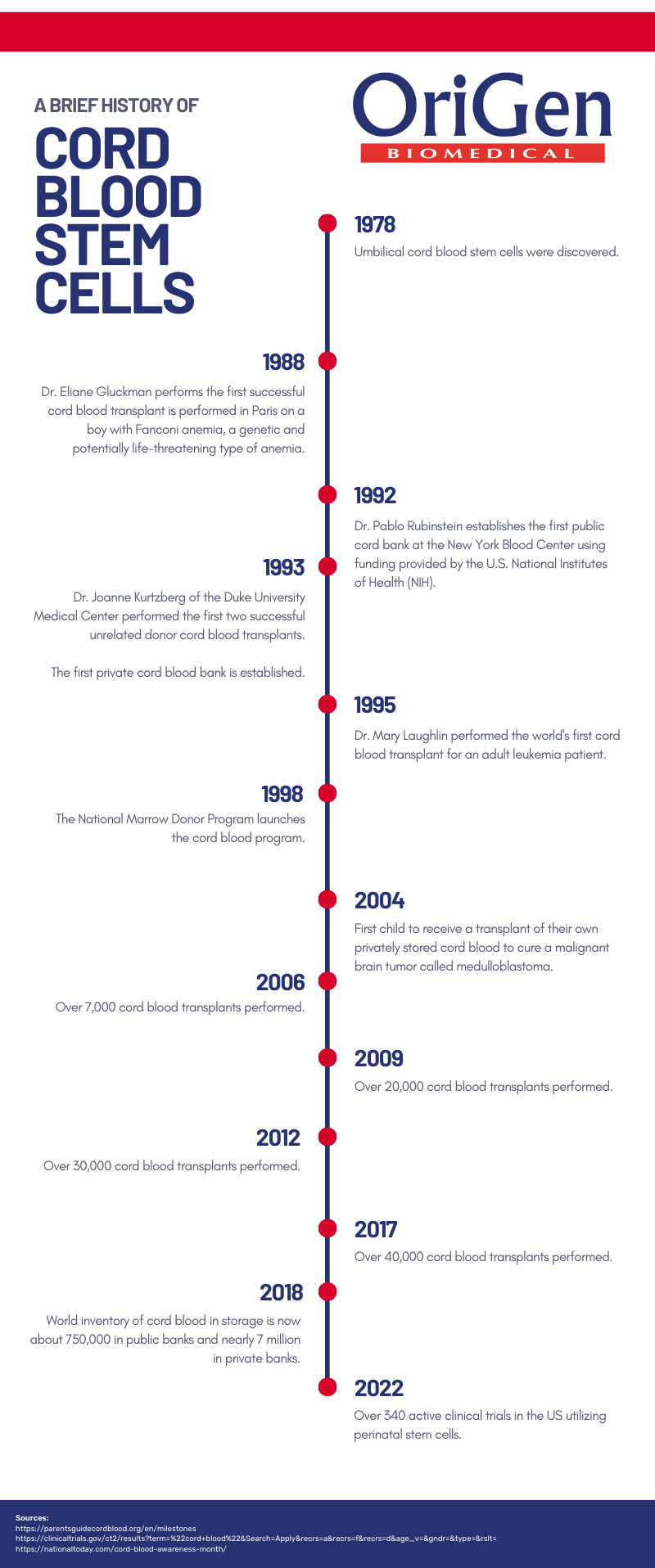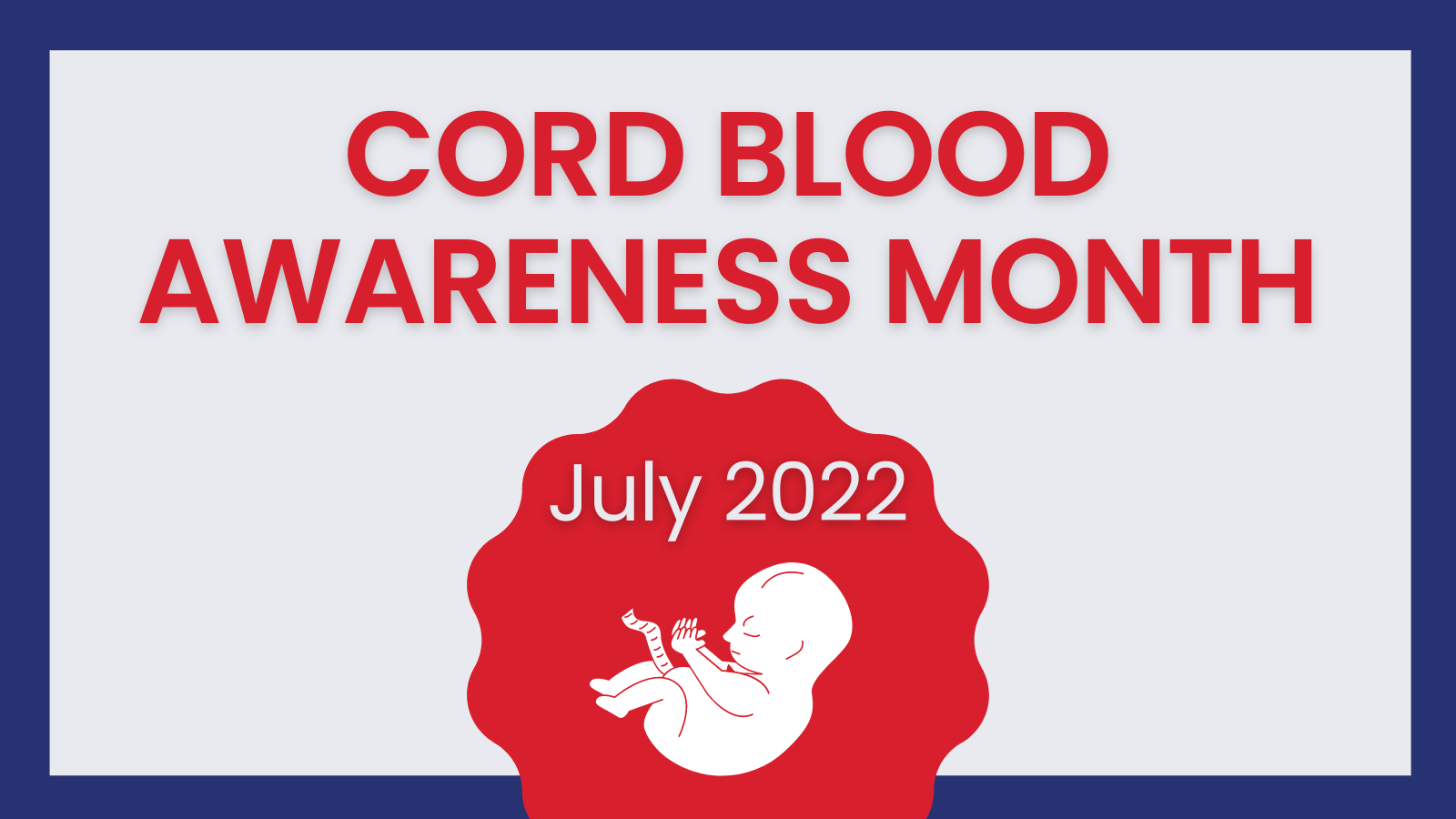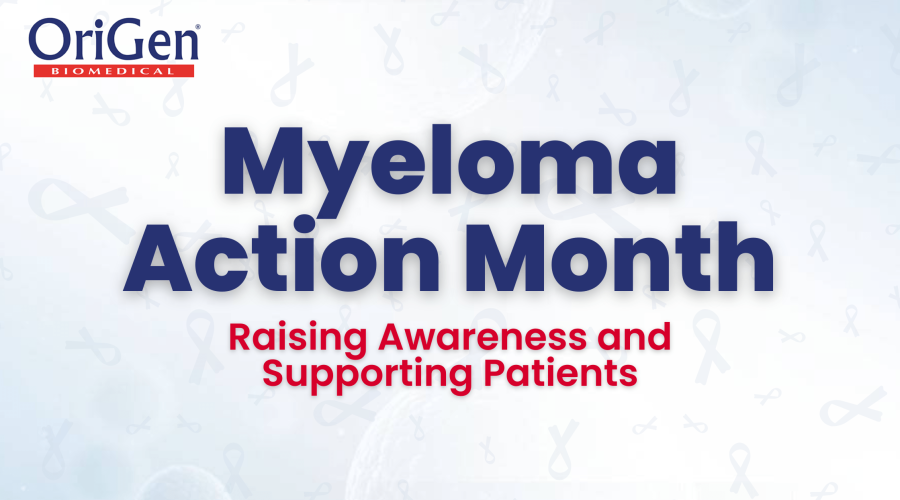July is Cord Blood Awareness Month and OriGen Biomedical would like to raise awareness and emphasize the life-saving properties of umbilical cord blood. More than 95% of all cord blood in the US is historically discarded as medical waste, despite its ability to treat more than 80 diseases–such as leukemia, lymphoma, and certain immune system or genetic metabolic disorders–as it is an established source of hematopoietic stem cells for transplantation. There are a variety of ongoing clinical trials studying the effectiveness of cord blood in treatment, and new conditions that can be treated with cord blood are constantly being identified.
Because the qualities that make a suitable match for bone marrow or umbilical cord blood are inherited, a match from a sibling or other family member is checked first. However, only 30% of patients who need a stem cell transplant have a matching donor in their family. For these patients, a transplant of bone marrow or cord blood from an unrelated donor may be their only transplant option.
Cord blood banks use various processing and storage methods as well as different containers and cryoprotectants to store cord blood. OriGen Biomedical delivers a comprehensive suite of products for small volume cryopreservation. CryoStore™ Multi-Chamber Freezing Bags are the next-generation single-use disposables with five 4-6ml chambers allowing for multiple post-thaw applications. In addition, OriGen supplies CryoPur™ DMSO cryopreservation solutions and accessories for fluid transfer to simplify the cryopreservation process.
Discover more about cord blood, banking, and public donations by visiting HRSA Blood Stem Cell Website, Be the Match, AABB’s Cord Blood Web Page, and the Cord Blood Association.
Below is a brief timeline of the history of cord blood donation and usage.

Because the qualities that make a suitable match for bone marrow or umbilical cord blood are inherited, a match from a sibling or other family member is checked first. However, only 30% of patients who need a stem cell transplant have a matching donor in their family. For these patients, a transplant of bone marrow or cord blood from an unrelated donor may be their only transplant option.
Umbilical Cord Blood May Help When Other Sources Cannot
Studies show that cord blood may not need to match as closely as is necessary for a marrow donor, which is a huge advantage for patients. Cord blood stored in a public cord blood bank has been prescreened, tested, and frozen and is ready to use; whereas, it can take weeks to months to find and confirm a bone marrow or peripheral blood donor. It is still being determined how long cord blood can be frozen and stored before it loses its effectiveness, but cord blood that has been cryopreserved for more than 10 years has still been successfully transplanted.[1] Additionally, the biological properties of cord blood units can be safely cryopreserved for more than 20 years under appropriate conditions and the earliest cord blood units do not show signs of deterioration.[2] Umbilical cord blood may be especially promising for:- Patients who have trouble finding a matched marrow donor
- Patients from diverse racial and ethnic heritages who often have an uncommon tissue type
- Patients who have a life-threatening genetic disorder
- Patients who are in need of an immediate transplant
Cord blood banks use various processing and storage methods as well as different containers and cryoprotectants to store cord blood. OriGen Biomedical delivers a comprehensive suite of products for small volume cryopreservation. CryoStore™ Multi-Chamber Freezing Bags are the next-generation single-use disposables with five 4-6ml chambers allowing for multiple post-thaw applications. In addition, OriGen supplies CryoPur™ DMSO cryopreservation solutions and accessories for fluid transfer to simplify the cryopreservation process.
Discover more about cord blood, banking, and public donations by visiting HRSA Blood Stem Cell Website, Be the Match, AABB’s Cord Blood Web Page, and the Cord Blood Association.
Below is a brief timeline of the history of cord blood donation and usage.





